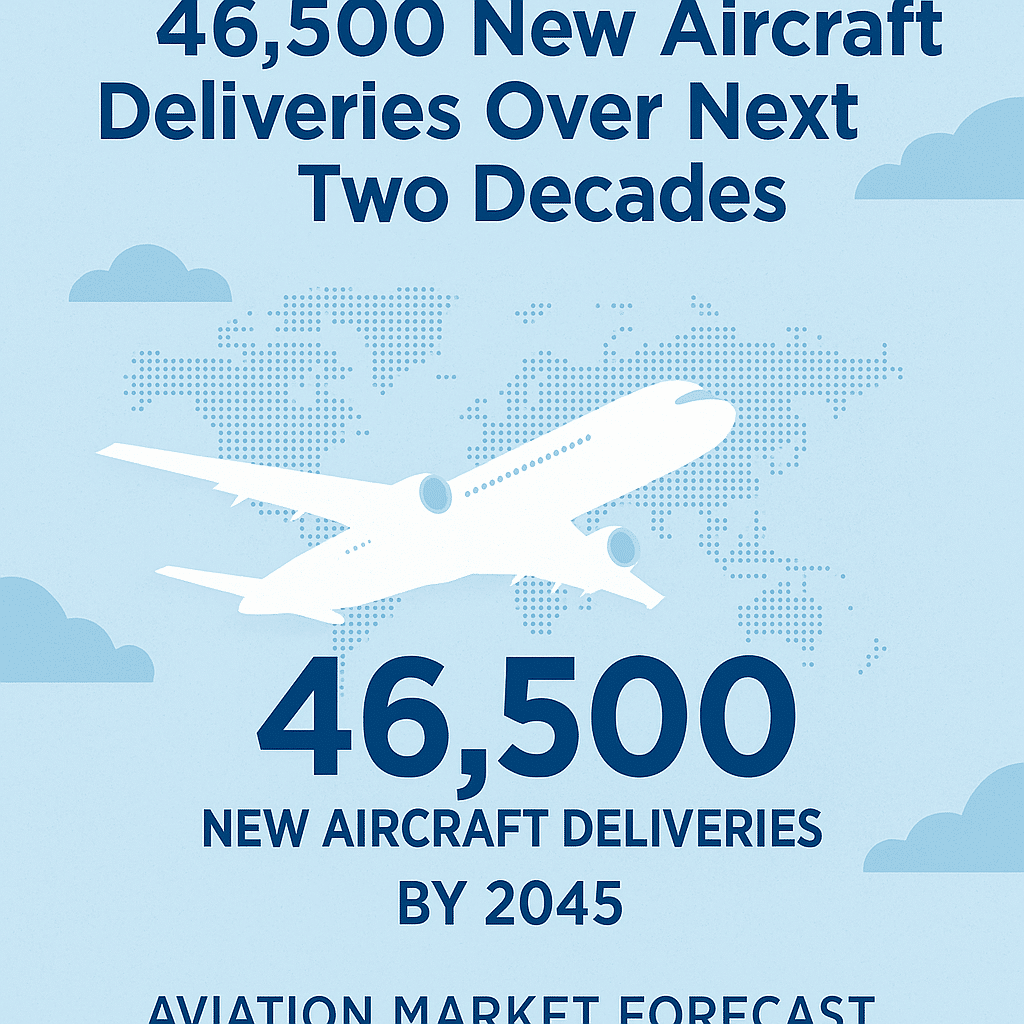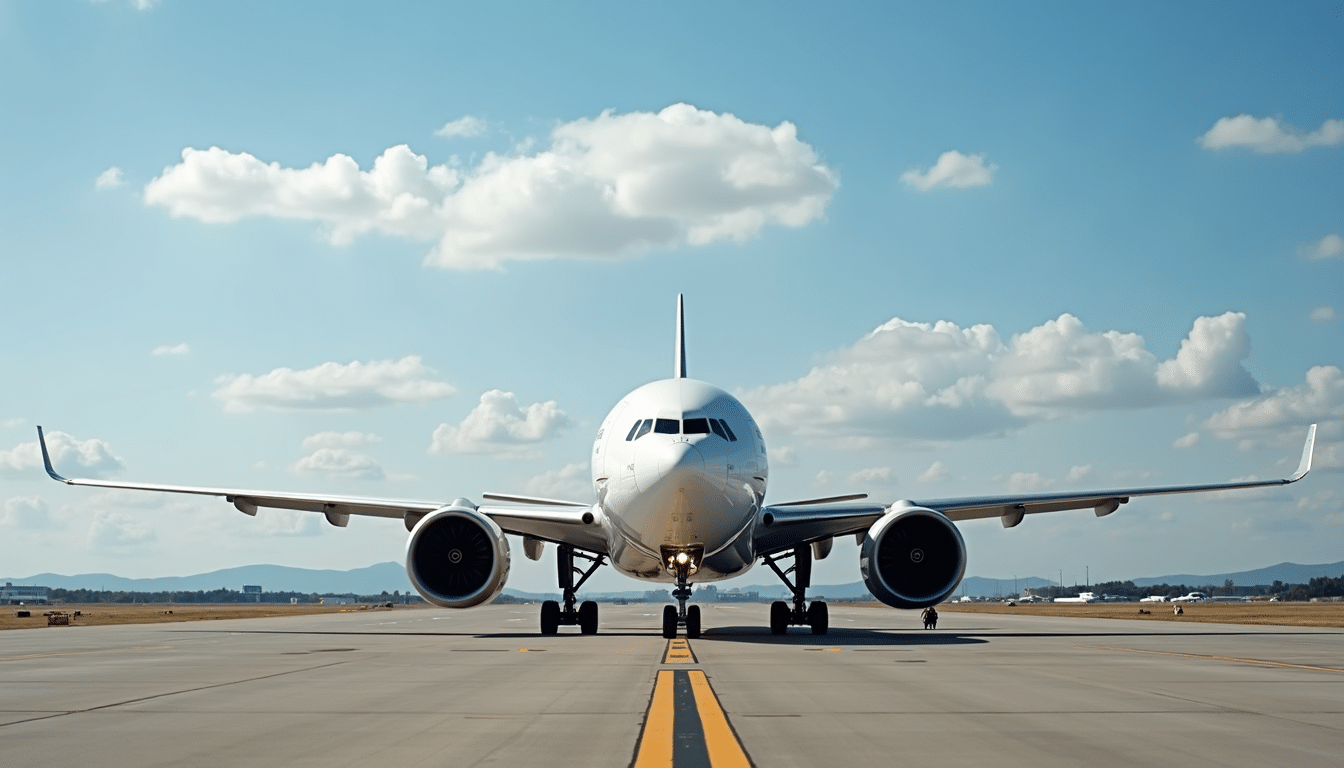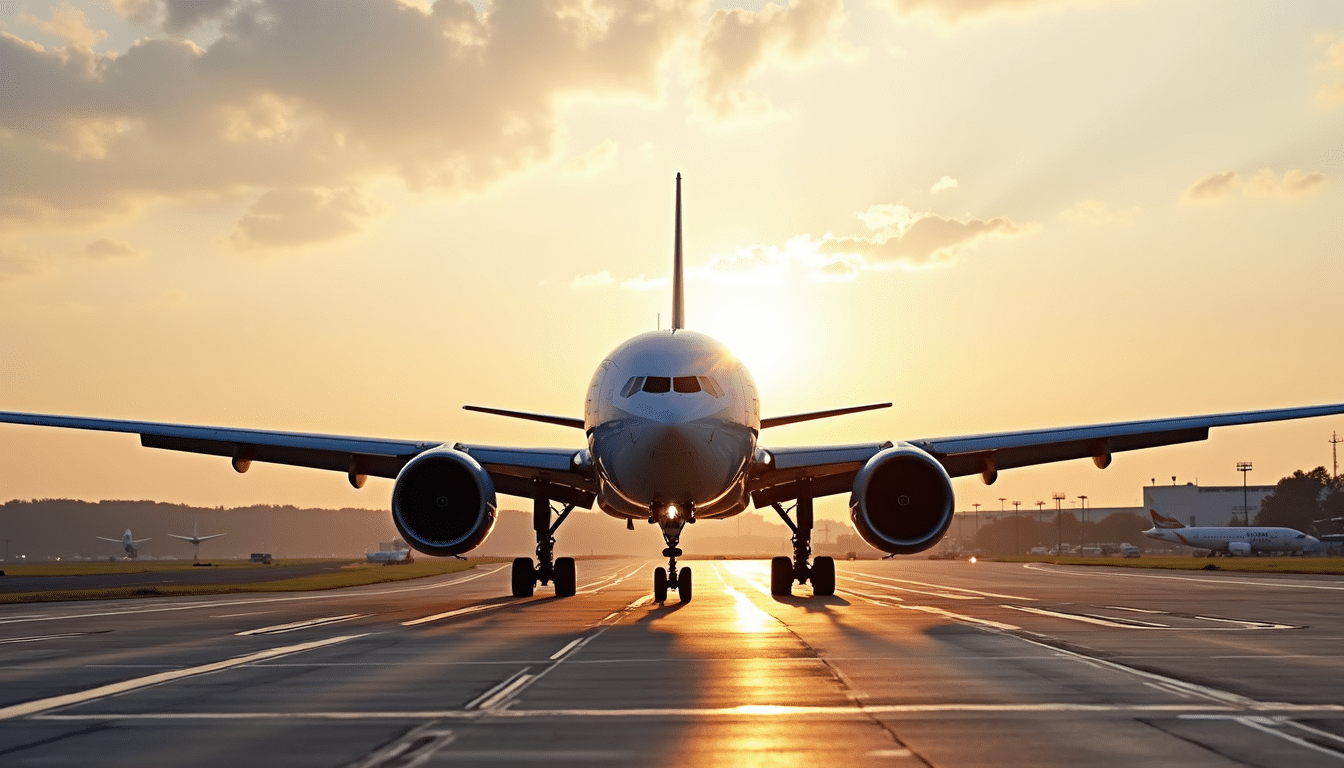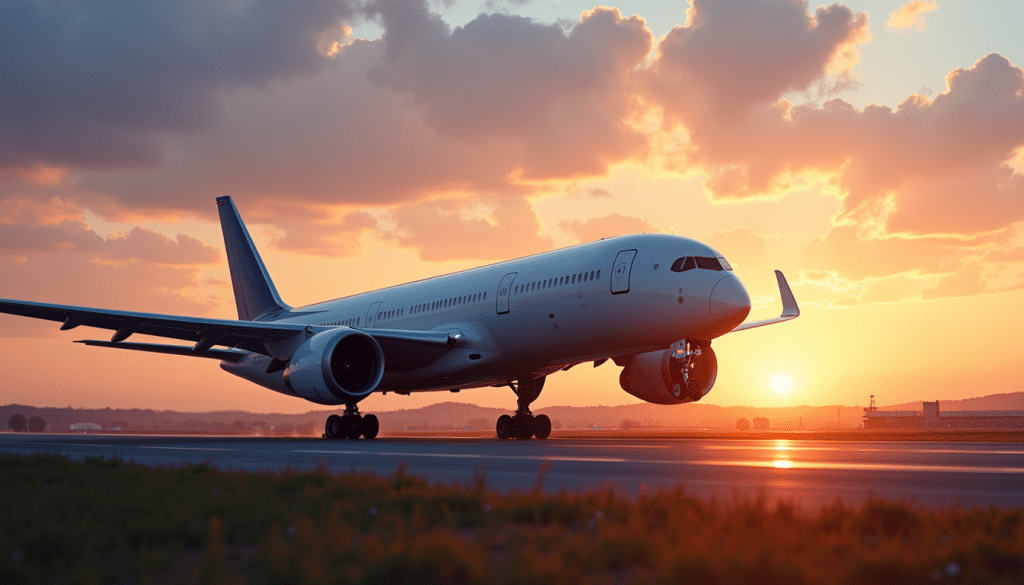There’s a major forecast from Cirium predicting 46,500 new aircraft will be delivered by 2044, representing $3.4 trillion in fleet investment that will reshape how you plan capacity and routes; however, persistent supply chain and production shortfalls pose dangerous delivery delays that could disrupt your renewal timelines and strategy.
Global Aircraft Delivery Forecast
Overview of Predictions
Cirium’s baseline projects about 46,500 new aircraft by 2044, with a 1% long-term uptick in deliveries. You should note narrowbodies will dominate—roughly 71% of the fleet—and Asia accounts for 45% of deliveries. Supply-chain fragility also looms: production shortfalls drive a projected 6% reduction in deliveries over the next seven years, a risk that will directly affect your fleet timing and capacity planning.
Estimated Value of Deliveries
The total value of Cirium’s forecast is roughly $3.4 trillion in new aircraft; you should expect Airbus and Boeing to capture around 92% of that value while delivering about 85% of airframes. This concentration means your procurement leverage, financing terms, and residual-value exposure will be heavily tied to those two OEMs.

Using the headline figures, the implied average price is about $73 million per aircraft ($3.4T/46,500). You should expect value distribution to skew: narrowbodies (71% of deliveries) will represent lower per-unit cost but dominate overall volume, while widebodies—about 17%—will account for a disproportionate share of total dollar value. Airbus and Boeing therefore control roughly $3.13 trillion of market value, leaving ~$270 billion for regional OEMs like Embraer and Comac; that concentration shapes your residual values, financing risk, and fleet-replacement economics.
Major Aircraft Manufacturers
As you track the delivery outlook, know that Cirium’s 46,500-aircraft baseline translates into an industry worth roughly $3.4 trillion, with Airbus and Boeing projected to supply about 85% of deliveries and 92% of the value; Asia alone accounts for roughly 45% of demand, while narrowbodies dominate at about 71% of the global fleet, shaping where your airline or supplier should focus investment and capacity planning.
Airbus and Boeing Projections
You’ll see both OEMs publishing similar, large-scale forecasts: Airbus anticipates around 49,000 new aircraft through 2044, while Boeing projects about 49,640; together they predict the fleet will stay heavily skewed to narrowbodies (roughly 70%), so your fleet strategies should prioritize single-aisle capacity, production ramp risks, and the move toward next‑generation, more efficient models.
Contributions from Other OEMs
While you’ll rely on Airbus and Boeing for scale, the remaining ~15% of deliveries will come from makers like Embraer and Comac, which supply regional jets and domestically focused single-aisles; these OEMs matter for niche network growth, regional connectivity, and replacement cycles where widebodies and large narrowbodies aren’t the answer.

For more detail, consider that Embraer’s E2 family targets regional demand and low-density routes, Comac’s C919 aims to capture China’s domestic single‑aisle market, and turboprop and regional manufacturers fill short-haul gaps — facts that mean your procurement, MRO planning, and route development should account for OEM-specific certification timelines and supply-chain variability. Production ramp and certification delays remain risks that can directly affect your delivery schedules.
Regional Market Growth
Asia continues to dominate demand, with markets like China and India driving expansion; Cirium shows the continent will account for 45% of all deliveries through 2044. You’ll see this regional surge underpin a global fleet worth roughly $3.4 trillion, concentrating procurement with OEMs and forcing airlines to adjust network planning, training and MRO investments to match rapid capacity growth.

Asia’s Dominance in Deliveries
China and India lead orderbook growth, and you’ll see intra-Asia travel and low-cost carriers fueling fleet renewal—short- to medium-haul narrowbodies are most in demand. Boeing forecasts that South and Southeast Asia, Africa, and China will post the largest passenger growth, amplifying Asia’s procurement power and aftermarket needs.
Global Fleet Composition Trends
Narrowbodies now dominate: Cirium reports roughly 71% of the global fleet, matching Boeing’s ~70% narrowbody projection to 2044; widebodies and regional jets remain below pre‑pandemic levels. You should plan fleet strategies around high single‑aisle penetration, shifting route economics, and increased pressure on spares and line maintenance.

Production bottlenecks matter: Cirium warns of a near‑term 6% reduction in deliveries over the next seven years due to narrowbody ramp delays, though long‑term deliveries tick up ~1%. You’ll also see OEMs push R&D into next‑gen sustainable types while Airbus and Boeing retain about 85% of deliveries and 92% of total fleet value, shaping residual values and transition timelines.
Sustainable Aircraft Development
As OEMs pivot, you should note that Cirium’s forecast of 46,500 new aircraft worth $3.4 trillion makes sustainability a business imperative; Airbus and Boeing are expected to account for 85% of deliveries, and you’ll see R&D shift toward next‑generation, low‑emissions platforms to meet industry net‑zero targets.
Focus on Next-Generation Aircraft
With narrowbodies at 71% of the global fleet, you’ll see most R&D and production focus on that segment; manufacturers are prioritising next‑generation designs, yet a projected 6% delivery shortfall over the next seven years could delay the introduction of sustainable variants and slow your fleet renewal plans.
Achieving Net-Zero Goals
To reach net‑zero, you’ll depend on targeted fleet renewal, SAF uptake and new airframe tech; Cirium data showing Asia will take 45% of deliveries means your decarbonisation choices in those growth markets will disproportionately shape global emissions outcomes.
Digging deeper, you should factor that Airbus and Boeing are forecast to capture 92% of the total aircraft value, concentrating R&D and market influence; at the same time, supply‑chain strains and the sector’s 1% long‑run uplift versus a near‑term 6% dip create timing risks that could undermine meeting net‑zero targets unless you accelerate adoption.
Challenges Ahead
You face a confluence of risks that could reshape the 46,500-delivery outlook: Cirium flags a 6% reduction in near-term deliveries while still projecting long-term growth to around 46,500 aircraft valued at $3.4 trillion. Manufacturers Airbus and Boeing account for roughly 85% of deliveries, and supply bottlenecks, skills gaps and geopolitical friction concentrate risk where volumes are highest, notably Asia (about 45% of deliveries).
Aircraft Delivery Delays
When deliveries slip, your network expansion and lease cycles are directly affected; Cirium links recent slowdowns to narrowbody production failing to ramp, predicting a 6% near-term drop over seven years. Certification holds, engine backlogs and labour shortages have forced multi-month handover delays, so airlines that planned summer launches saw route rollouts deferred and short-term leasing costs spike.
Supply Chain Issues
You must account for a tangled global supply chain: COVID-19 disruptions, semiconductor shortages and regional export controls have extended lead times for avionics, engines and composite sections. Airbus and Boeing rely on hundreds of tiered suppliers, so a single choke point can cascade delays—particularly since narrowbodies represent 71% of the fleet and Asia will take about 45% of deliveries.

OEMs and suppliers are already adopting measures you should track: dual sourcing, longer buffer inventories, supplier financing and on-site supplier hubs to compress lead times. Airbus and Boeing face pressure to scale narrowbody output—given their 85% market share—and are investing in automation and workforce training. Airlines spending over $3.4 trillion on replacements will hedge via lease extensions and engine-on-wing programs to avoid grounding routes when a single component delay threatens capacity.
Industry Implications
You will face a market shaped by 46,500 new deliveries worth about $3.4 trillion, where Airbus and Boeing jointly control roughly 85% of deliveries and 92% of value; supply chain fragility—skills shortages, geopolitical unrest and certification delays—means you must plan for volatility, especially given Cirium’s forecasted 6% delivery reduction over the next seven years even as long‑run deliveries edge up by 1%.
Demand for Efficient Aircraft
You’ll see narrowbody demand dominate: they already make up 71% of the global fleet, driven by airlines spending on fleet renewal and expansion; OEMs are prioritizing R&D into next‑generation, sustainable and fuel‑efficient types, so your fleet decisions will hinge on fuel burn, maintenance costs and emissions performance.
Future Market Dynamics
You should expect OEM forecasts near parity—Airbus ~49,000 and Boeing ~49,640 new aircraft—and regional shifts with Asia accounting for 45% of deliveries; fleet mix projections (about 70% narrowbody, 17% widebody, 13% regional) mean your network, capacity planning and MRO sourcing must adapt to evolving passenger growth patterns and production pacing.
For more detail, you need to factor service demand rising sharply: Airbus expects service requirements to grow about 10% year‑on‑year, while the concentration of OEM market share (85% held by Airbus/Boeing) will influence parts availability and aftermarket pricing, so your procurement, leasing strategies and partnership choices will determine how well you absorb delivery slippages and regional demand surges.
Conclusion
Presently you should view Cirium’s forecast of about 46,500 new aircraft by 2044 as a clear signal that your sector will undergo sustained fleet renewal and expansion, with roughly $3.4 trillion in value, dominant narrowbody demand and strong Asian growth shaping strategy; you must prioritize supply‑chain resilience, production scalability and investment in next‑generation sustainable aircraft to align operations with this long‑term outlook.

